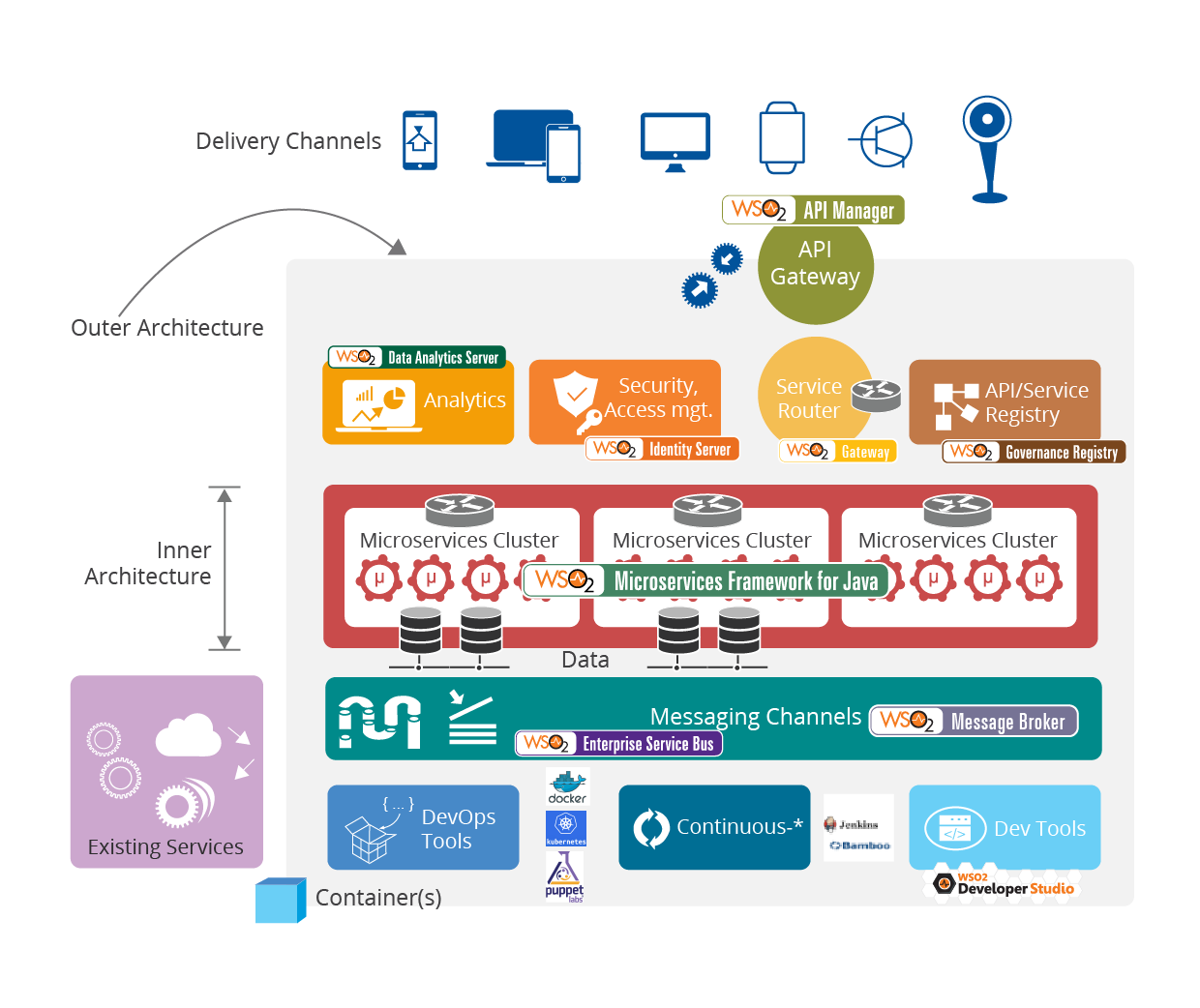Enabling Microservice Architecture with Middleware

- Samudra Weerasinghe
- Senior Lead Marketing Officer - WSO2

Microservices is rapidly gaining popularity among today’s enterprise architects to ensure continuous, agile delivery and flexible deployments. However many mistake microservice architecture (MSA) to be a completely new architectural pattern. What most don’t understand is that it’s an evolution of Service Oriented Architecture (SOA). It has an iterative architectural approach and development methodology for complex, service-oriented applications.
Asanka Abeysinghe, the vice president of solutions architecture at WSO2, recently wrote a white paper, which explores how you can efficiently implement MSA in a service-oriented system.
Here are some insights from the white paper.
When implementing MSA you need to create sets of services for each business unit in order to build applications that benefit their specific users. When doing so you need to consider the scope of the service rather than the actual size. You need to solve rapidly changing business requirements by decentralizing governance and your infrastructure should be automated in such a way that allows you to quickly spin up new instances based on runtime features. These are just a few of the many features of MSA, some of which are shared by SOA.
MSA combines the best practices of SOA and links them with modern application delivery and tooling (Docker and Kubernetes) and technology to carry out automation (Puppet and Chef).
In MSA you need to give importance to how you scope out a service rather than the size. The inner architecture of an MSA addresses the implementation architecture of the microservices, themselves. But to enable flexible and scalable development and deployment of microservices, you first need to focus on its outer architecture, which addresses its platform capabilities.
Enterprise middleware plays a key role in both the inner and outer architecture of MSA. Your middleware needs to have high performance functionality and support various service standards. It has to be lean and use minimum resources in your infrastructure as well as be DevOps-friendly. It should allow your system to be highly scalable and available by having an iterative architecture and being pluggable. It should also include a comprehensive data analytics solutions to ensure design for failure.
This may seem like a multitude of functionality and requirements that are just impossible to meet. But with WSO2’s complete middleware stack, which includes the WSO2 Microservices Framework for Java and WSO2 integration, API management, security and analytics platforms, you can easily build an efficient MSA for your enterprise.

MSA is no doubt the way forward. But you need to incorporate its useful features into your existing architecture without losing applications and key SOA principles that are already there. By using the correct middleware capabilities, enterprises can fully leverage the advantages provided by an MSA to enable ease of implementation and speed of time to market.
For more details download Asanka’s whitepaper here.
